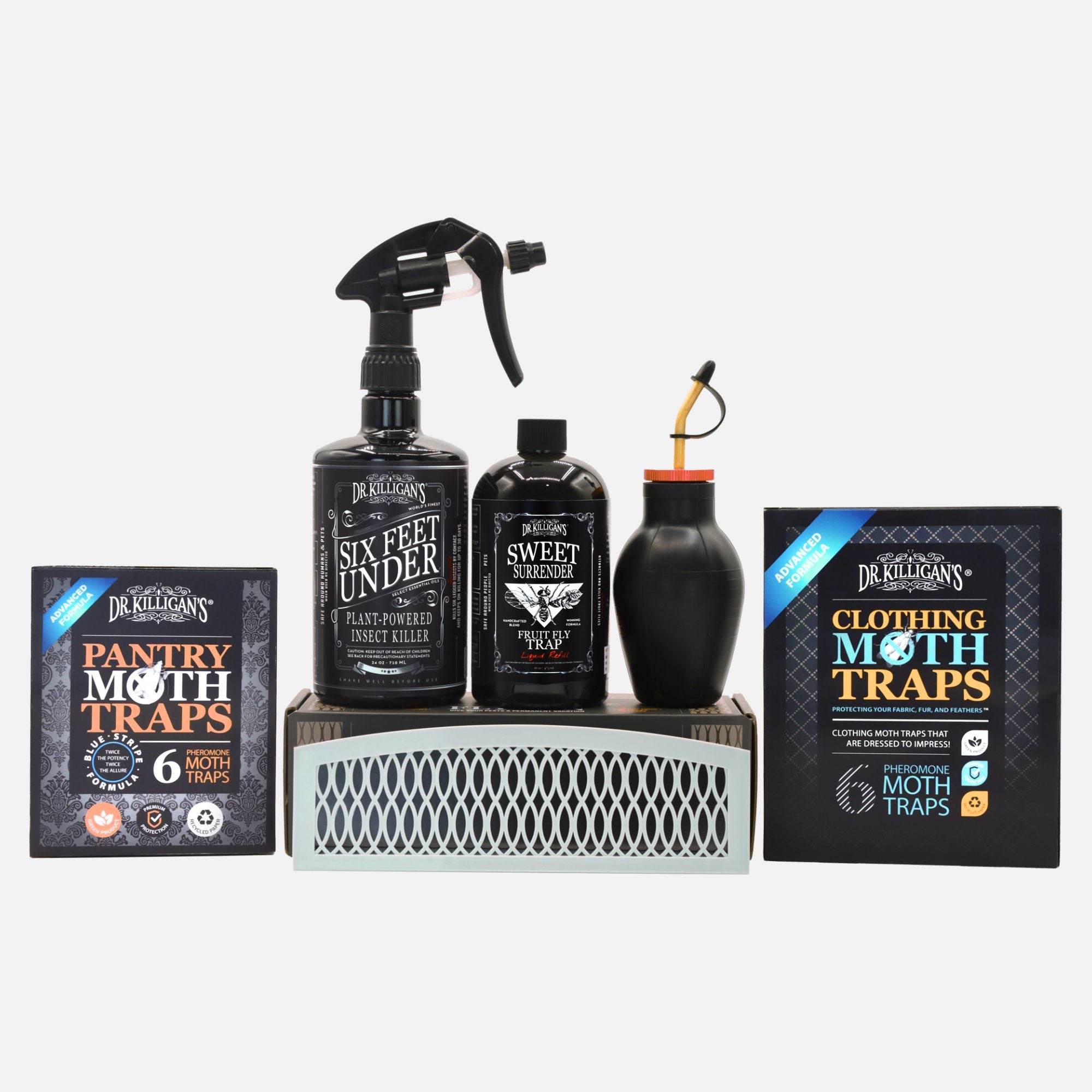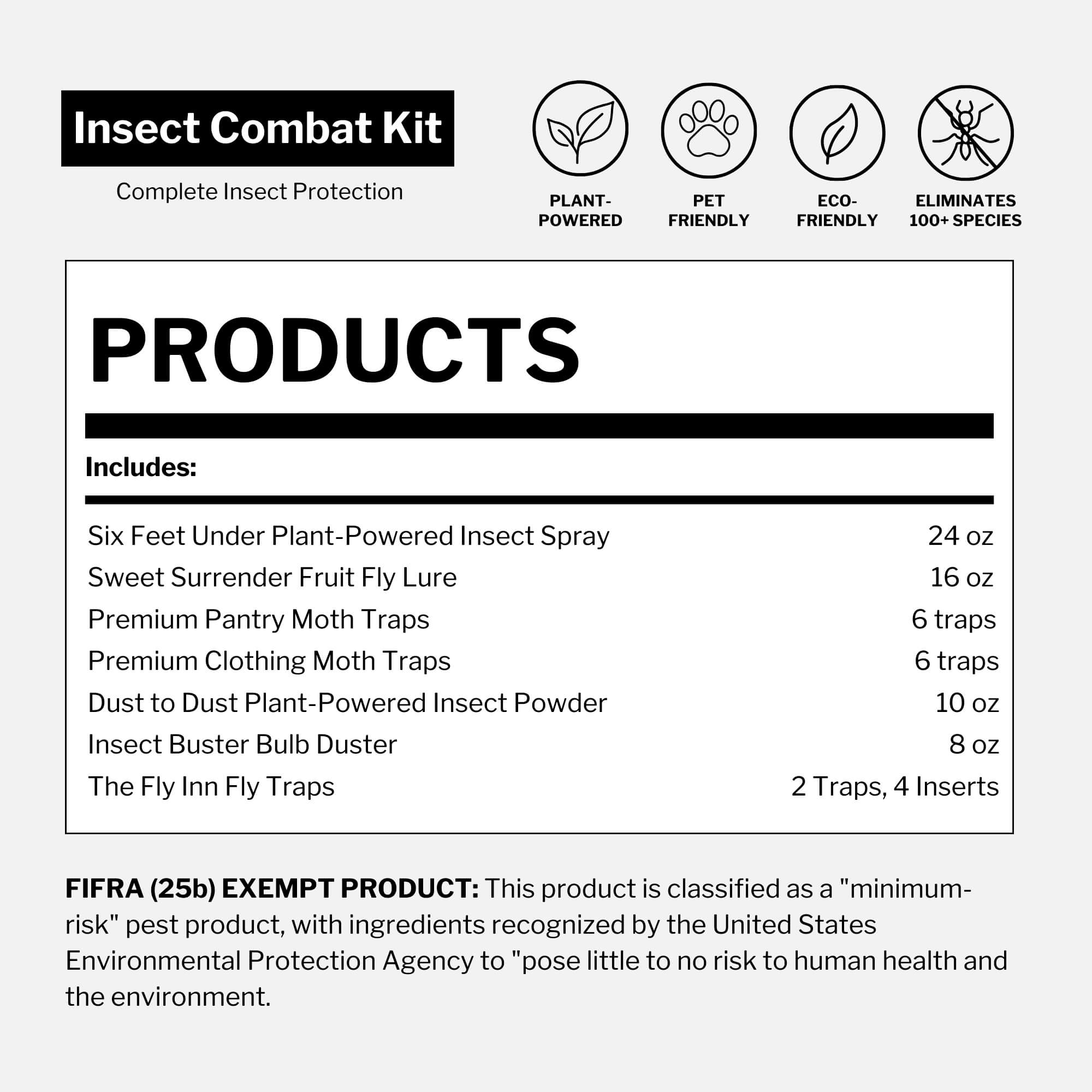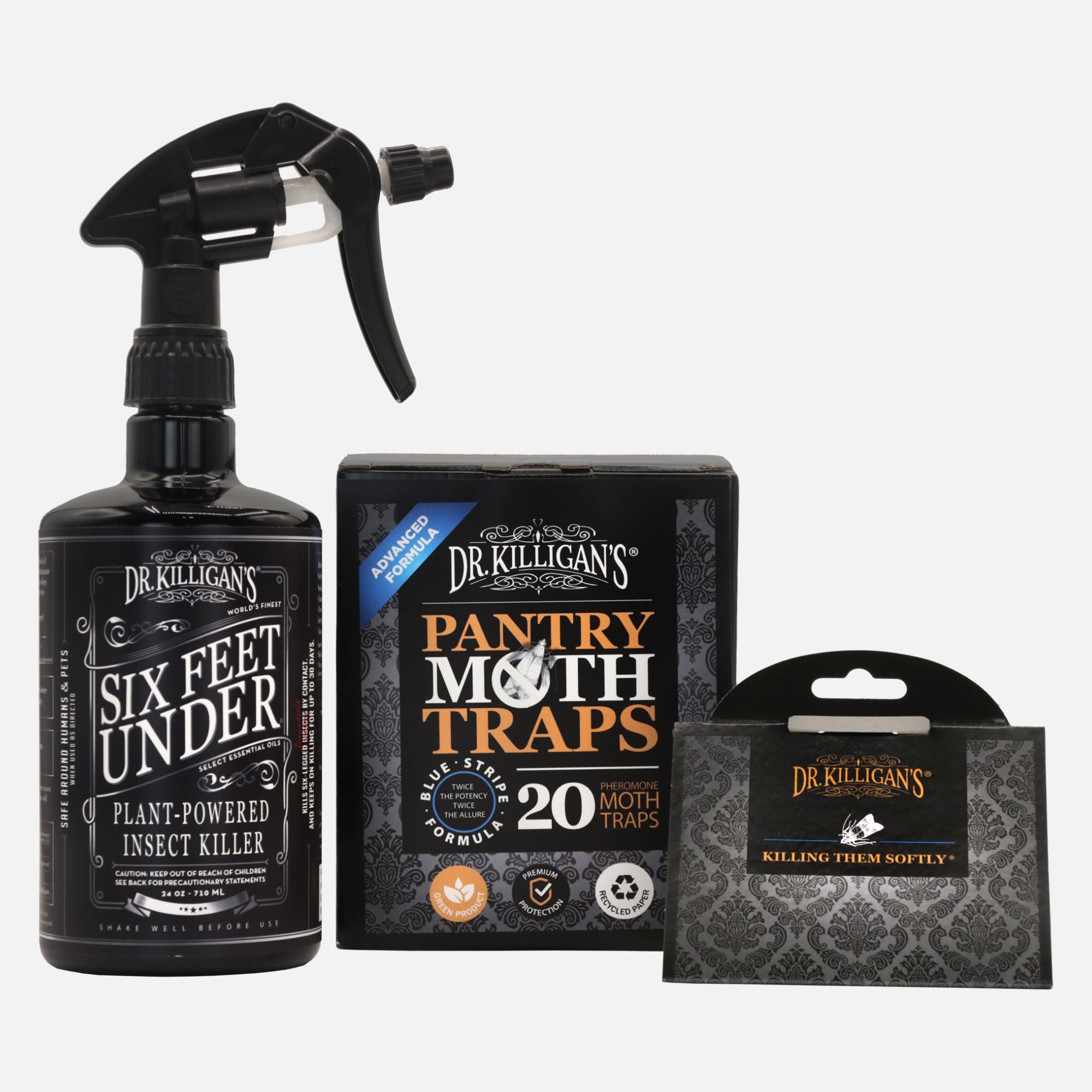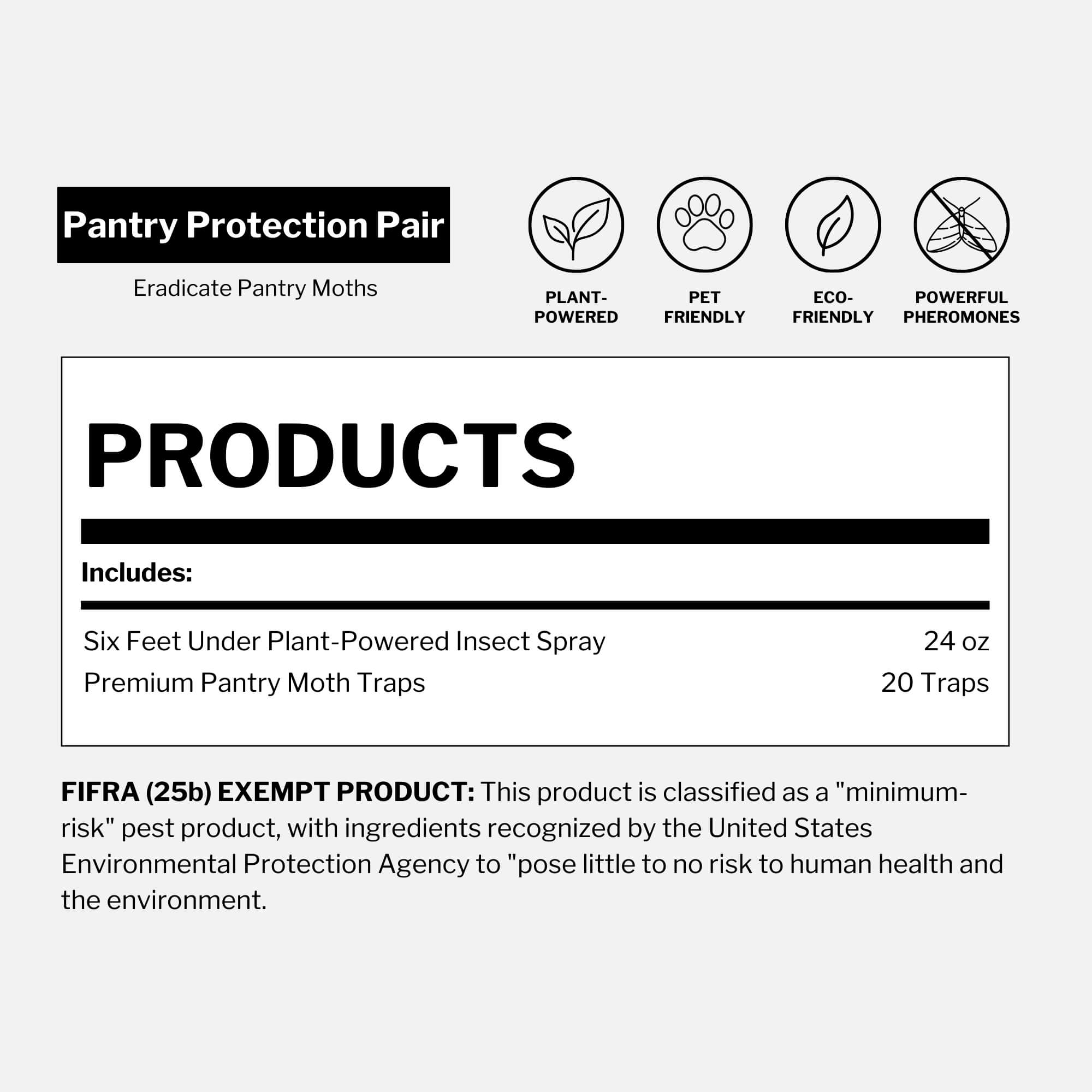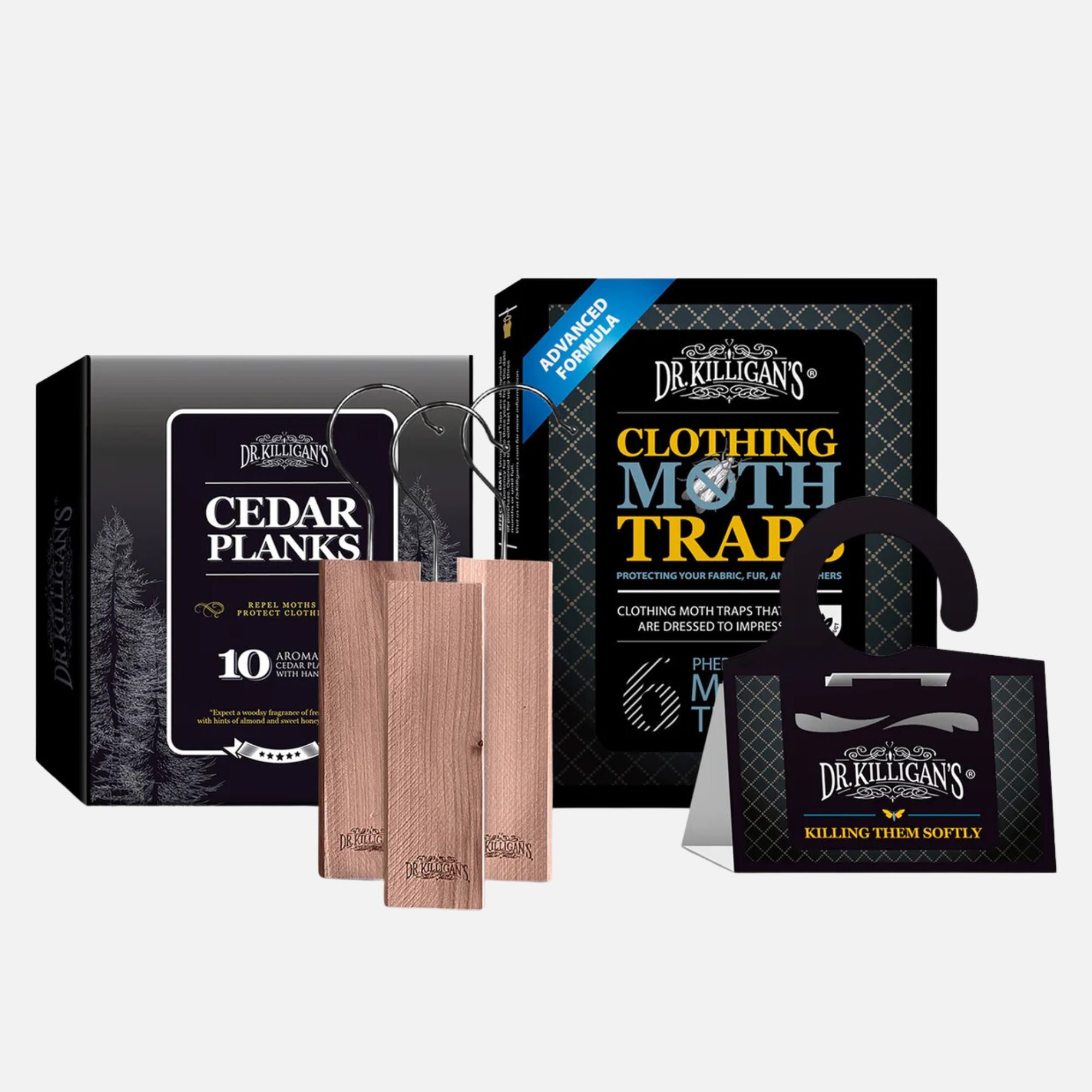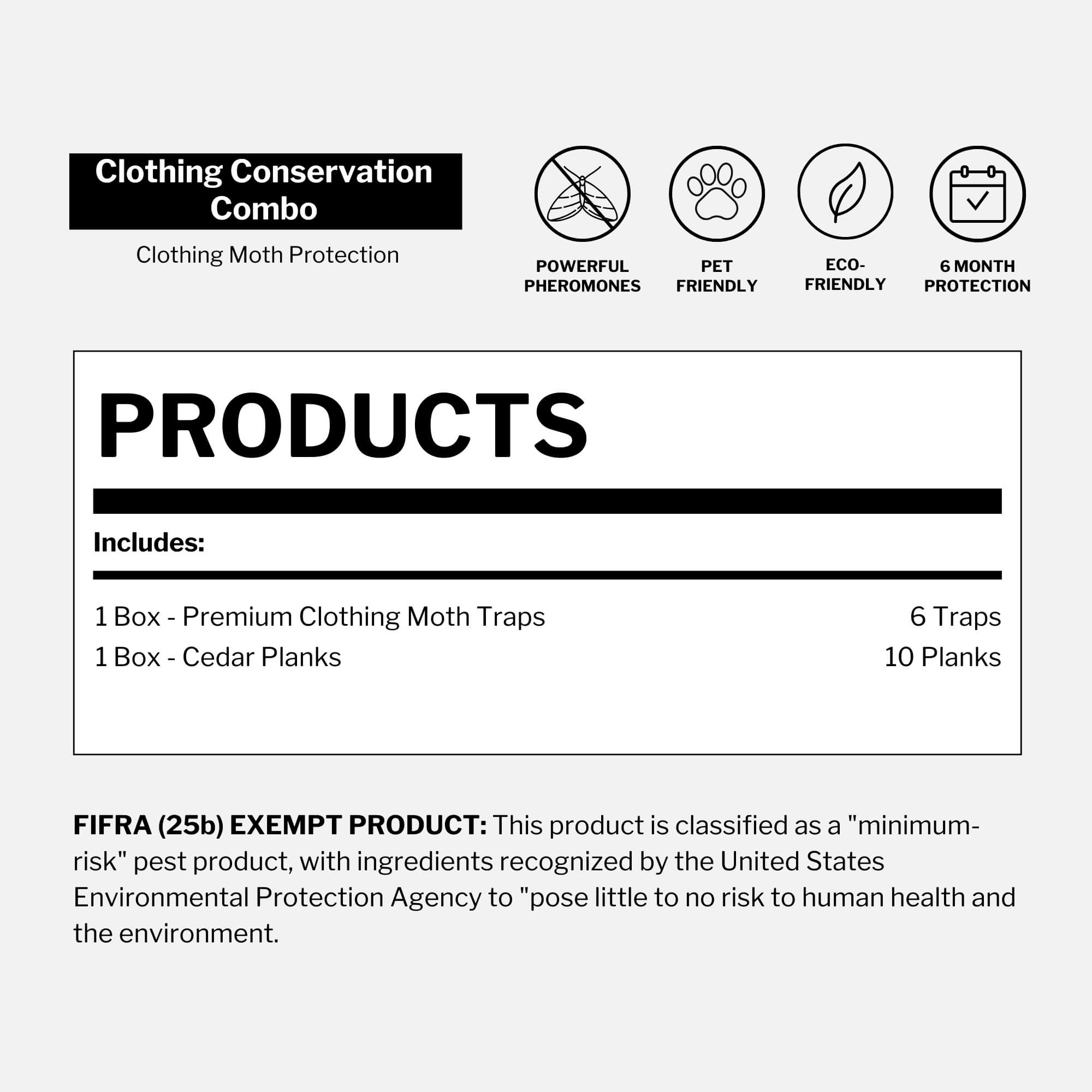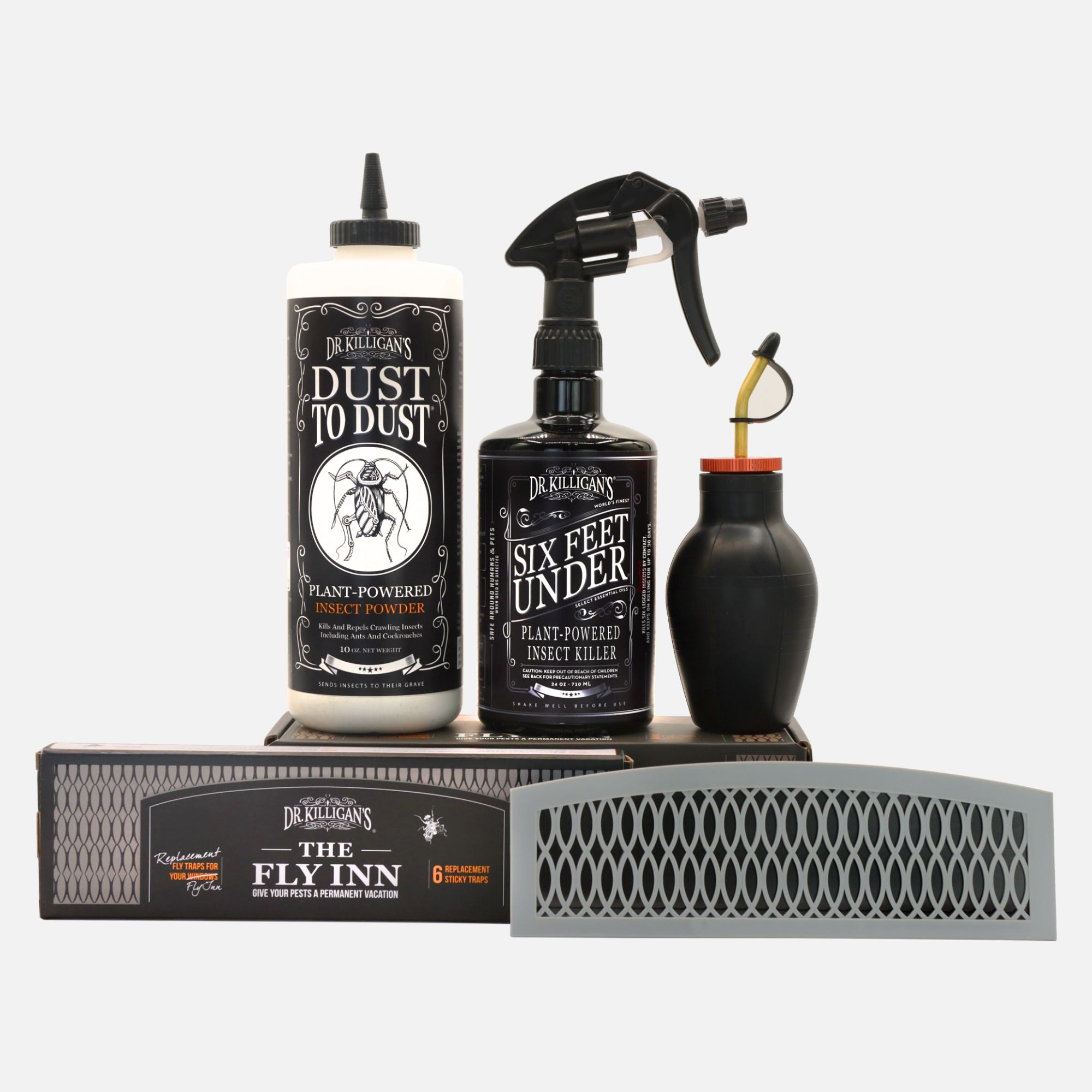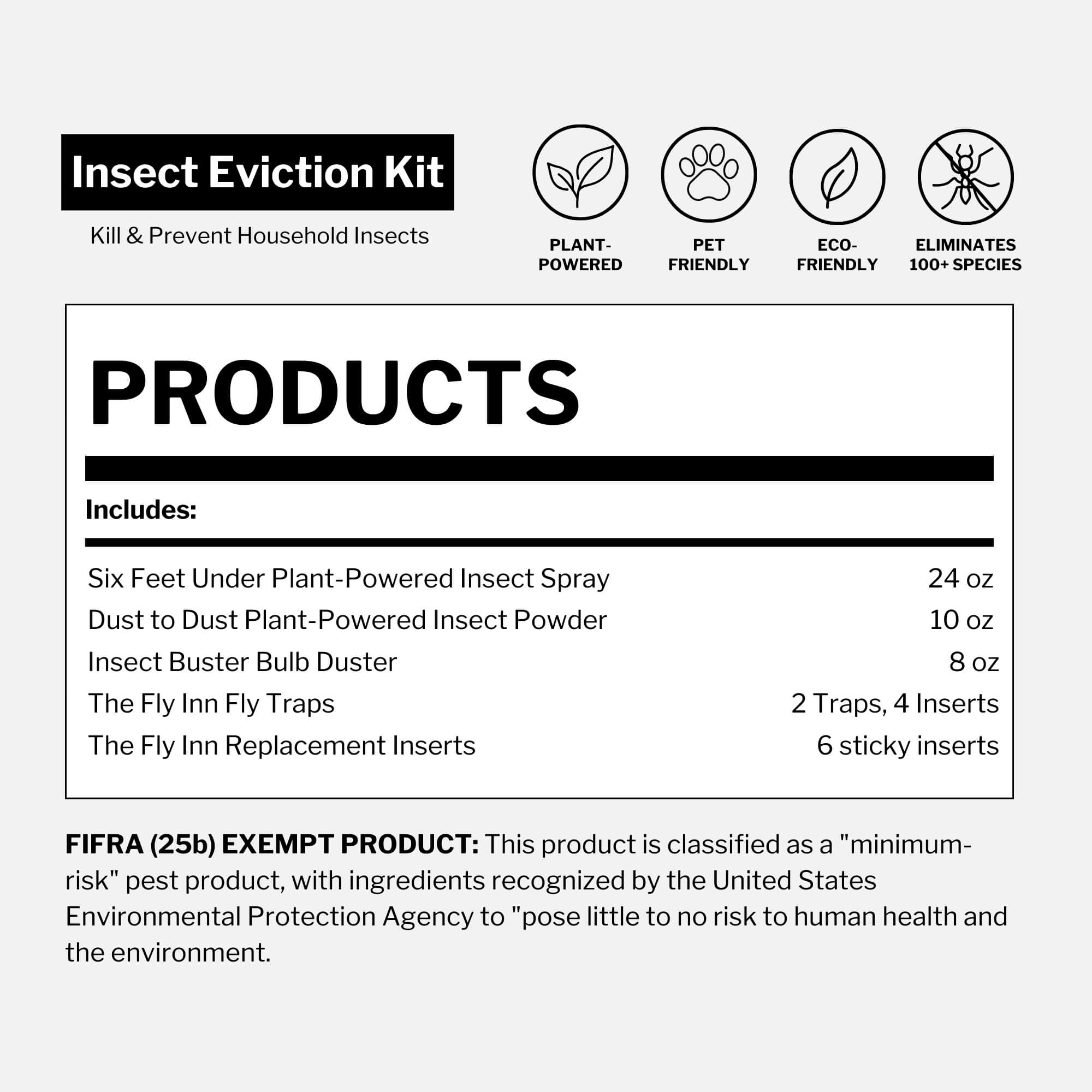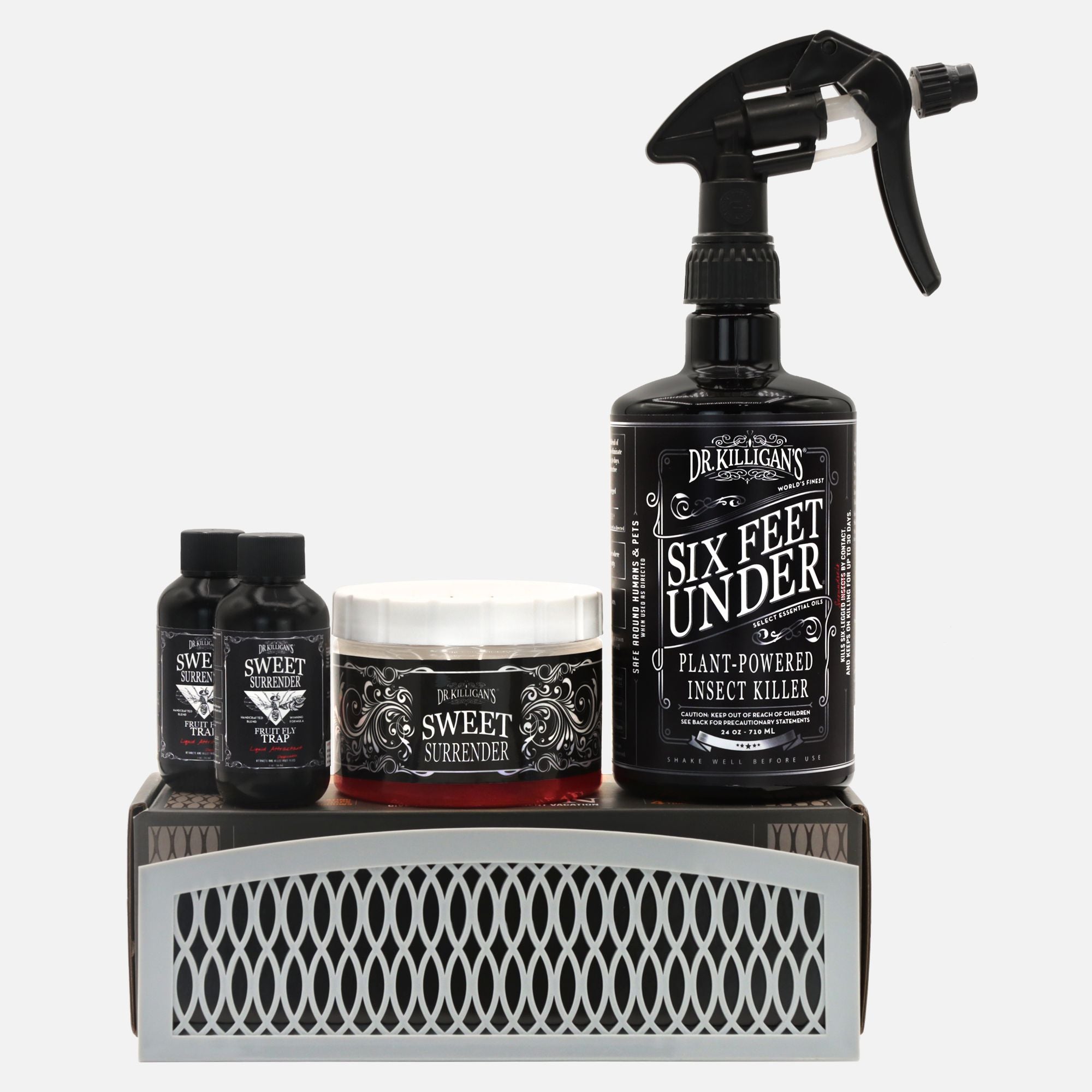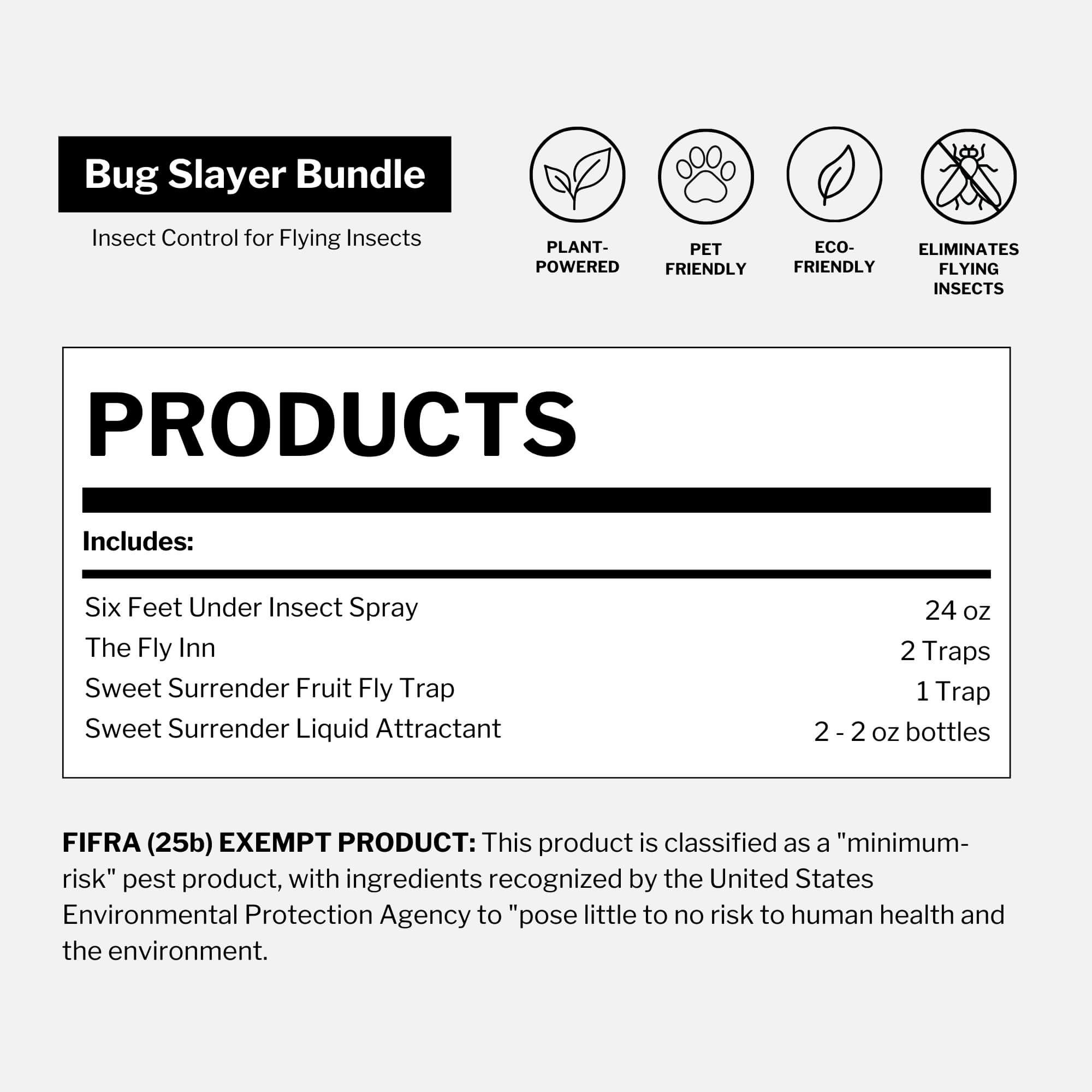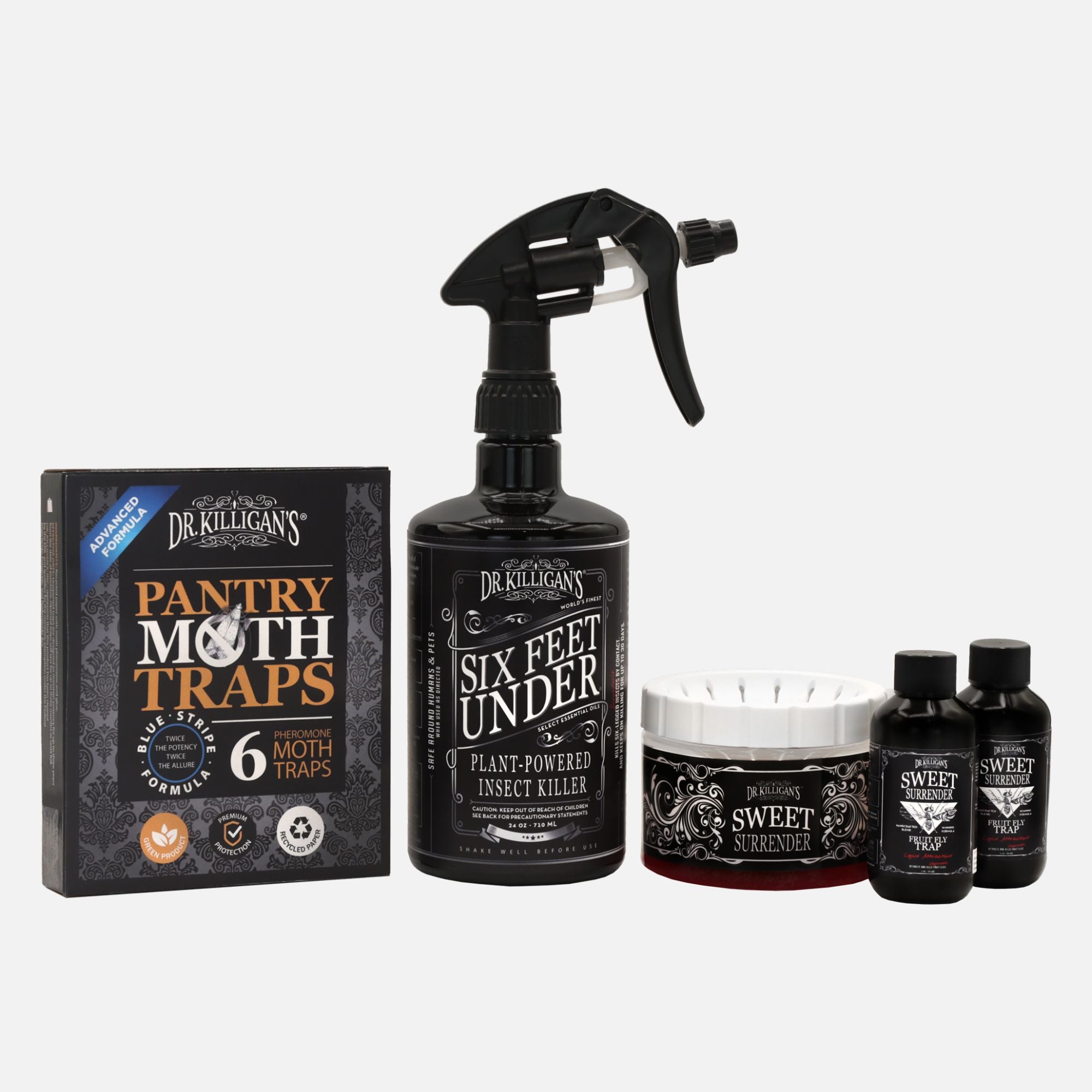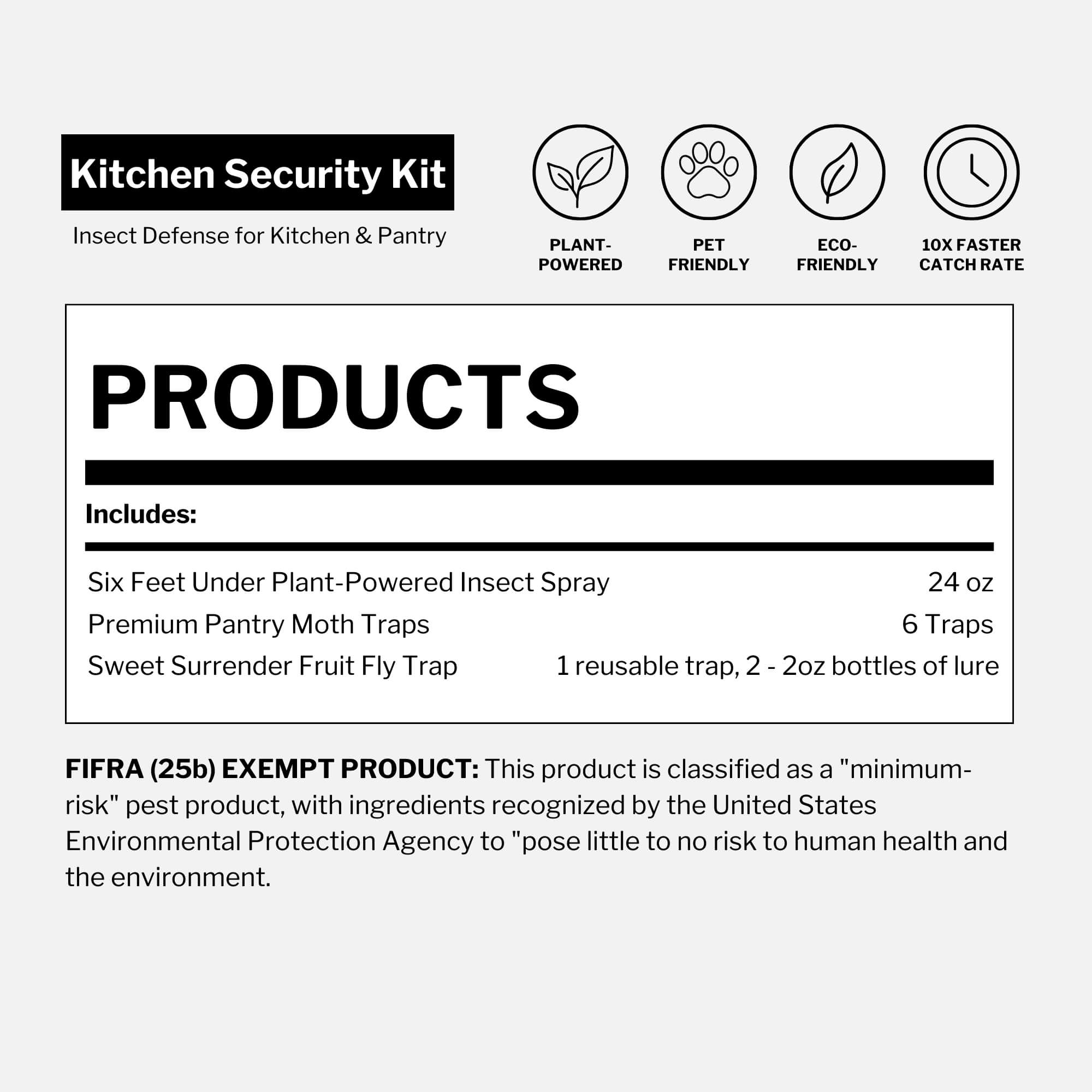Updated on July 25, 2024
Welcome to Dr. Killigan's ultimate guide on pest control, where we delve into the world of effective pest management. Keeping those pesky house bugs at bay is essential for a harmonious living environment.
In this guide, we'll explore effective strategies and identify specific solutions for common household pests
The do's of pest control
1. Implement prevention measures
Consider these proactive steps to keep your home pest-free:

-
Seal cracks and gaps: Thoroughly inspect and seal any cracks, gaps or openings in your home’s structure to prevent insects and rodents from entering. Pay special attention to areas where utilities and pipes enter the home, as these are common entry points for pests.
-
Store food properly: Always keep your food in sealed containers and ensure that pantry shelves are clean and free from crumbs or spills. This practice deprives pests of easy access to nourishment and significantly reduces the risk of infestations in vulnerable areas such as your pantry.
-
Eliminate standing water: Remove breeding grounds for mosquitoes and other insects by ensuring there are no areas of standing water around your home. Regularly check and clear gutters, plant saucers and other objects where water may accumulate.
- Use moth traps: To proactively detect and manage moth populations, deploy Dr. Killigan’s Clothing Moth Traps and Pantry Moth Traps in susceptible areas of your home. Place these traps in closets, wardrobes and pantries where moths are likely to be found. This strategic placement helps catch moths early, preventing them from establishing an infestation and protecting your clothes and food.
2. Perform regular cleaning and maintenance
Maintaining a clean and orderly home is crucial for effective pest management. Here are key practices to incorporate:
-
Maintain general cleanliness: Keep your home clean and clutter-free. Regularly clean all surfaces— especially in the kitchen and bathroom—where food particles and moisture can accumulate. Vacuum carpets frequently, mop floors and ensure that trash is promptly sealed and disposed of. Additionally, organize storage areas and avoid piles of clothes or paper that can provide hiding spots for pests.
-
Trim and tidy yards and gardens: Regularly trim vegetation and properly dispose of yard waste. Keeping your yard well-manicured helps prevent overgrowth where pests can nest and breed, reducing the likelihood of infestations near your home.
- Use residual sprays: Apply Six Feet Under inside your trash cans, recycle bins and other areas where food odors attract pests. This product not only neutralizes odors but also leaves a residual effect that helps deter insects and pests.
3. Use natural and non-toxic repellents
Embracing non-toxic solutions helps prevent harm to your family and the environment while effectively repelling pests.

-
Essential oils: Utilize natural deterrents such as peppermint, rosemary and cinnamon oils to repel a variety of bugs.
*Peppermint oil is particularly effective against spiders, ants and mosquitoes due to its strong scent that overwhelms pests’ sensitive smell receptors. *Rosemary oil is known to repel flies and mosquitoes and can be used in gardens to protect plants. *Cinnamon oil repels insects and has strong antibacterial and antifungal properties that help prevent mold and mildew in damp areas of your home.
-
Cedar Planks: Employ Cedar Planks in closets and drawers to naturally repel common clothes moths. The natural oils in cedar wood emit a fragrance that is pleasing to humans but repulsive to moths, effectively deterring them from laying eggs on your garments. Tip: To maintain their effectiveness, lightly sand the cedar planks annually or spritze a few drops of Cedar Ward oil spray to rejuvenate the scent, ensuring long-lasting protection against moths.
- Dust to Dust: Apply Dust to Dust Plant-Powered Insect Powder along baseboards, in corners and under appliances to create an effective barrier against crawling insects. This natural insecticide powder works by dehydrating insects that come into contact with it, providing a long-lasting defense. Tip: Be sure to reapply the powder periodically, especially after cleaning, to maintain an uninterrupted protective barrier around your home.
4. Know your enemies
Equip your home with tailored strategies to manage and prevent specific pests, including ants, cockroaches, bed bugs, mosquitoes, flies, spiders and moths.
Here is targeted advice for each of these common house bugs:
-
Ants: Ants can quickly become unwelcome guests in your home, foraging for food and leaving trails behind. To control ants, use natural repellents like peppermint oil or Dust to Dust to deter them from entering your living spaces. Seal cracks and crevices where they may be entering, and eliminate food sources by keeping your kitchen clean.
-
Cockroaches: Cockroaches are notorious for their resilience and ability to hide in small spaces. Combat cockroach infestations by ensuring a clean and dry environment, depriving them of food and water. Use Dust to Dust to effectively address the problem.
-
Bed bugs: Bed bugs are persistent and can disrupt your sleep with their bites. Wash bedding and linens regularly in hot water, and use a stiff brush to scrub mattress seams. Use Six Feet Under to repel and eliminate these pests. Note: Six Feet Under will kill bed bugs, but it is not a long-term solution to bed bug infestations.
- Mosquitoes: Mosquitoes are not only annoying but can also transmit diseases. To control mosquitos, eliminate standing water where they breed, such as in buckets or flowerpots. Use mosquito nets or screens in your home, and consider planting mosquito-repelling plants like citronella and lavender in your garden.

-
Flies: Flies can contaminate food and spread diseases. Keep your home clean and dispose of trash promptly. Use The Fly Inn to catch and eliminate them and implement these natural ways to deter them. Use Sweet Surrender to attract and kill the common fruit fly.
-
Spiders: Spiders can be beneficial in controlling other pests but can also become a nuisance. Common house spiders are usually seen in the autumn months when males leave their webs in search of females. Keep your home tidy and clutter-free to reduce potential hiding spots for spiders. Use natural repellents like peppermint oil or non-toxic sprays like Six Feet Under to keep them at bay.
-
Clothing moths: Clothing moths can wreak havoc on your wardrobe and textiles. To repel common clothes moths, regularly clean and declutter your closets and use Clothing Moth Traps to alert you of the presence of moths. Use natural repellents like Cedar Planks to keep moths at bay.
- Pantry moths: Pantry moths can quicklycontaminate dried food goods. Keep your pantry clean and organized, regularly inspecting and discarding expired or infested food items. Use airtight containers for storing grains, cereals and other susceptible foods. As a preventative measure, place one Pantry Moth Trap in your pantry to alert you of the presence of pantry moths before they gain a foothold.
The don'ts of pest control
1. Don’t use toxic chemicals
Avoiding harmful substances is crucial for safe pest control.

-
Avoid harmful pesticides: To protect your health and the environment, steer clear of toxic chemicals commonly found in many pesticides. These substances can lead to a range of health issues, from acute symptoms like skin irritation and respiratory problems to more severe chronic conditions. They can also negatively impact wildlife and pollute ecosystems. Instead, opt for eco-friendly alternatives like Dr. Killigan's that effectively manage pest problems.
- Say no to mothballs: While mothballs are a traditional solution for warding off pests like moths and silverfish, they contain naphthalene or paradichlorobenzene—chemicals that can be harmful to humans, pets and the environment. Exposure to these substances can cause health issues ranging from respiratory problems and skin irritation to more severe effects like damage to red blood cells. Use Cedar Planks Clothes Moth Repellent as a natural and safe alternative.
2. Don’t ignore early signs of infestation
Taking prompt action is essential when dealing with house bugs. Ignoring the early signs of infestation—such as seeing the occasional pest or finding droppings—can allow the problem to escalate, leading to more extensive and challenging infestations. Early detection allows for simpler and often more natural methods of pest control, reducing the need for harsh chemicals. By addressing the issue at the first hint of trouble—whether it's a few ants on the counter or a single moth near the pantry—you can prevent extensive damage and manage the situation before pests have a chance to multiply, ensuring a swift return to a pest-free home.
For quick reference, here are helpful guides from our blog on managing common pests effectively:
- How to get rid of flies
- How to get rid of chiggers
- How to get rid of silverfish
- How to get rid of earwigs
- How to get rid of cockroaches
- How to get rid of fleas
- How to get rid of ants
- How to get rid of wasps
- How to get rid of cicada killer wasps
- How to get rid of aphids
- How to get rid of spotted lanternflies
- How to get rid of clothing moths
- How to get rid of and prevent pantry moths
- Five ways to get rid of and repel bees
- How to instantly kill carpenter bees
Each guide offers tailored advice and strategies to tackle these pests efficiently.
3. Don’t use unsustainable practices
Opt for pest control methods that effectively manage infestations while minimizing environmental impact. By choosing Dr. Killigan’s, which promotes non-toxic, plant-based ingredients, you not only protect your home but also contribute to the preservation of our planet. These sustainable practices ensure that the solutions are safe for both people and pets, and they support the health of the environment, allowing us to safeguard nature for future generations. By selecting eco-friendly options, you play a crucial role in promoting a healthier, more sustainable approach to pest control.




